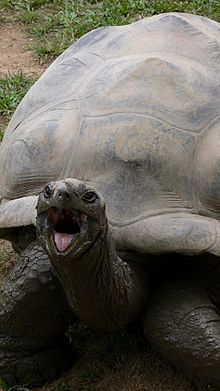
Figure 1 – Harriet the Galapagos Tortoise at the Australia Zoo, sticking out her tongue. Image by Cory Doctrow and from the Wikimedia Commons under creative commons license.
My wife remarked today that the major use of social media appears to be the exchange of pictures of cute and cuddly animals and of videos of flash mobs dancing. It seems to me that there is a lot of truth in this. My posting about Mark Twain and the love of cats, or ailurophilia, has stirred up a bit of controversy among my more rabid dog loving readers, or poochalikes. This got me wondering about the relative universality of images designed to tug on our collective heart strings and evoke a big giant “Awwwww!” I mean, and at the risk of insulting fidophiles further, one person’s cute is after all another person’s lunch.
I was amazed recently when I showed the famous video of Matty the Sloth giving a flower to his caregiver to a friend and reader from South America, that she smiled politely, shook her head, and informed me that I do not like these. There must be something about tree sloths, where familiarity breeds contempt. I mean dodge a few doggie dos on the lawn and you too could stop being a Sirius dog-lover.
In truth I actually do like dogs, albeit not as much as I like cats. But I definitely have enough love to go around – and each for his own. There are insect lovers and snake lovers, bird lovers and horse lovers.
A surprising number of the readers of this blog are turtle and tortoise lovers. Figure 1 is for them. I know it is not an especially artistic image. It is an image of a Galapagos tortoise named Harriet, who until June 23, 2006 was resident of a zoo in Australia. Harriet was a handsome tortoise – cute and cuddly to some. In the picture she is perhaps sticking out her tongue at us. Perhaps she recognizes her own importance to the world.
Harriet, you see, was born around 1830. So she was around 175 when she passed away. She is believed to have been collected in the Galapagos during the voyage of the Beagle in 1831-1836. There is some evidence that she was collected by by Sir Charles Darwin himself.
It is believed that Harriet and two other tortoises were brought to the Australian Botanic Garden in 1841 by John Clements Wickham, who was the First Lieutenant of the HMS Beagle during Darwin’s voyage and later Captain of the ship. The names of the tortoises were: Tom, Dick, and Harry. Awwww!
So here’s the thing, Harriet and her kin were truly zoological celebrities. They were much more than mere representatives of their species, Geochelone nigra porteri. They played a very key role in our understanding of how life evolved on the Earth. They paid a price for this celebrity by being exiled from their homes for nearly two centuries.
Turtles have lived on the planet Earth for in excess of 200 million years. We may wonder how this is possible. As Ogden Nash remarked:
“The turtle lives ‘twixt plated decks
Which practically conceal its sex.
I think it clever of the turtle
In such a fix to be so fertile.“
